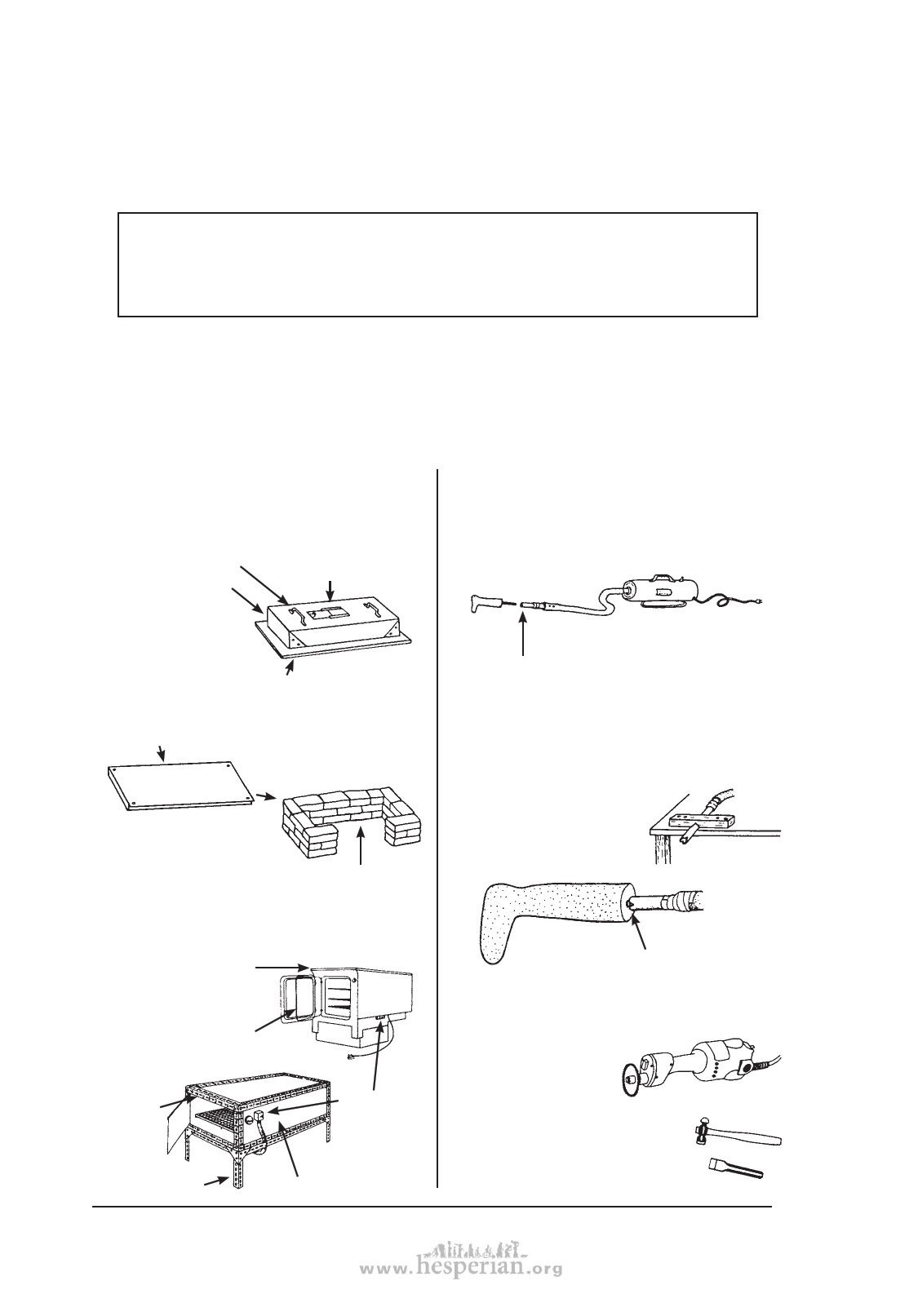
554 chapter 58
Method 2: Polypropylene braces
Polypropylene is a special plastic available in large sheets from orthopedic supply
stores and some plastic factories. For most braces, sheets 30 cm. by 60 cm. (1 foot
by 2 feet) are large enough. Thickness should be 3 mm. (1/8 inch) for thinner, more
flexible braces and 4 mm. to 5 mm. (3/16 inch) for stronger, less flexible braces.
Polypropylene, where available, is usually the best plastic for braces. It is flexible but strong.
It is easy to stretch and mold when hot. Cost is US $1.00 to $2.00 per brace. Polyethylene
can also be used but is more likely to wrinkle like bacon if it gets too hot. You can experiment
with whatever plastic you find. A program in Pakistan uses plastic bus windows, although
this hard clear plastic (Plexiglas) is more difficult to stretch and shape when hot.
This method is the one used by professional brace makers. Here we simplify it
as much as possible. Equipment and materials needed are mostly the same as in
Method 1 (see p. 551). However, high-quality braces can be made more easily with
a few extra pieces of equipment (they are not absolutely necessary). This extra
equipment includes:
• special oven*
SIMPLE SHEET-METAL BOX OVEN
(riveted or soldered together)
handles
Box should be at least
70 cm. (28 in.) long,
40 cm. (16 in.) wide,
and 10 cm. (4 in.) high.
window for looking
at plastic when it
is heating, with
sliding or hinged door
• vacuum sweeper
(if electricity is available) or other form of suction.
(The suction pulls the hot plastic tightly against the
cast until it cools. However, this is not absolutely
necessary.)
sheet of metal (preferably aluminum, because it spreads
heat best) at least 6 mm. (1/4 in. to 1/2 in.) thick
If you can get it, rivet a piece of ‘Teflon’ cloth over the
metal sheet. This will help keep the hot plastic from
sticking to the metal. Or you
can use a Teflon spray.
• metal pipe
Tape it to the end of the vacuum sweeper hose.
The pipe should be a little bigger than the rod used
in the leg cast. By bending the rod slightly, it will fit
very tightly into the pipe.
The ‘oven’ can be placed
over any source of heat.
Use the cooking fire, or you
may want to build a simple
fireplace to support it.
Burn wood or
cow dung here.
Figure out some way to clamp
or bolt the pipe firmly to a
strong bench or table.
COMPLEX GAS OR ELECTRIC OVENS
(designs from Huckstep’s Poliomyelitis.
2 kitchen ovens
welded together
Put 2 notches in the pipe so
it will breathe when pushed
up against the plaster.
heat resistant glass or
plastic window indoor
heating
filaments
mounted
on top
thermostat—
for controlling
temperature
angle iron
heat-resistant walls
• electric cast-cutter
These are very expensive
but a great help if you
are making a lot of
plastic braces.
If you do not have a cast-cutter
you may have to use a hammer and
chisel to cut the plastic. You
can heat the chisel so that it
will melt the plastic.
*Some brace makers in Pakistan use no oven, but simply hold the plastic sheet over a ‘chula’
(earth pot) of hot coals. See photo on p. 538.
Disabled village Children